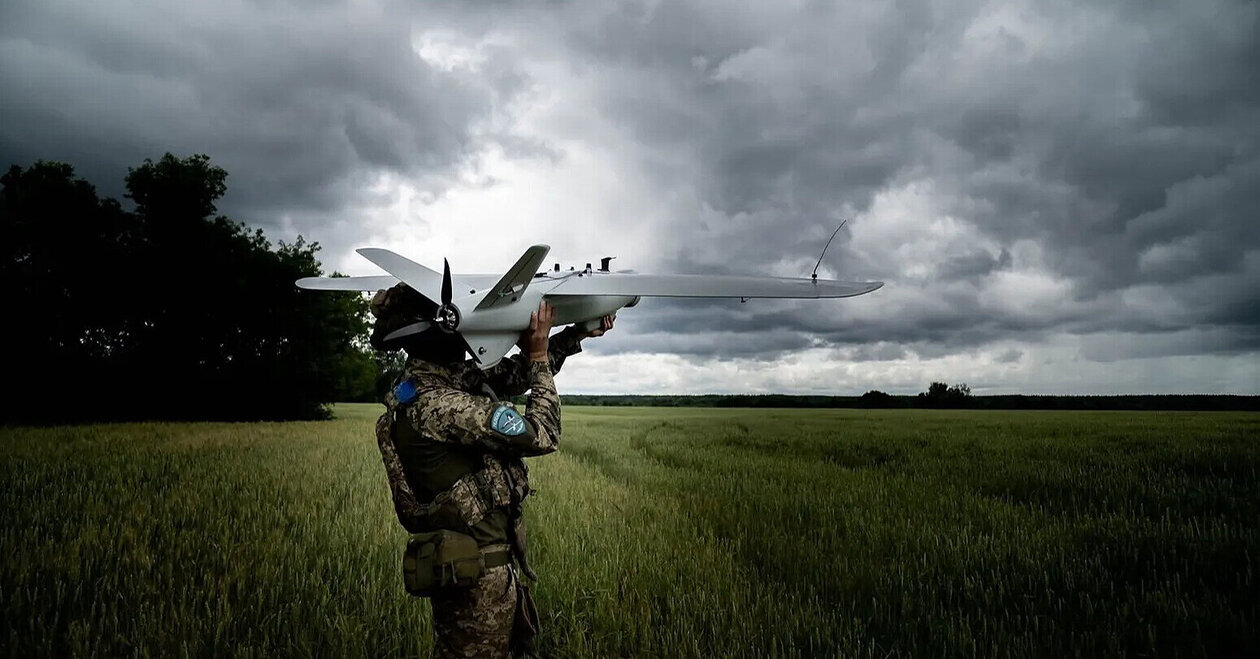Vue normale
-
Le Devoir
-
Gracia Kasoki Katahwa serait la numéro 2 d’une administration Rabouin à Montréal
L’actuelle mairesse de Côte-des-Neiges–Notre-Dame-de-Grâce a insisté sur sa détermination à «prendre soin des gens».
-
Euromaidan Press
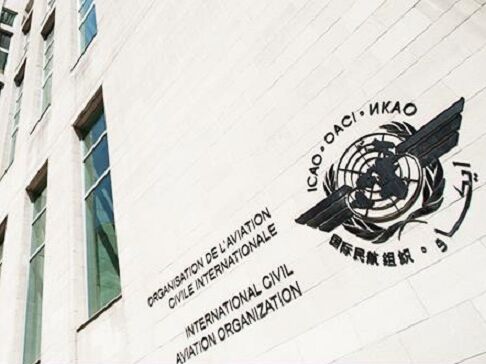
-
Russia lobbies UN aviation agency to end air sanctions, claims violations of human rights
Russia has asked the UN’s International Civil Aviation Organization (ICAO) to ease sanctions imposed over its full-scale invasion of Ukraine, Reuters reported, citing documents and sources. According to a working paper submitted by Moscow, the restrictions on spare parts and overflights allegedly “violate the human right to freedom of movement regardless of nationality and citizenship.” The paper also attacked the closure of airspace by 37 countries, the suspension of air
Russia lobbies UN aviation agency to end air sanctions, claims violations of human rights

Russia has asked the UN’s International Civil Aviation Organization (ICAO) to ease sanctions imposed over its full-scale invasion of Ukraine, Reuters reported, citing documents and sources.
According to a working paper submitted by Moscow, the restrictions on spare parts and overflights allegedly “violate the human right to freedom of movement regardless of nationality and citizenship.”
The paper also attacked the closure of airspace by 37 countries, the suspension of airworthiness certificates, and bans on technical servicing. Russia called on ICAO to take “all practical measures to prevent states from applying politically motivated, discriminatory and coercive measures.”
Russia is also lobbying ICAO’s triennial assembly for relief and attempting to win back a seat on the body’s 36-member governing council after losing a 2022 vote in the wake of its aggression against Ukraine.
Moscow’s request discloses its urgent effort to secure access to critical spare parts for its predominantly Western-made civilian fleet. More than 700 Boeing and Airbus aircraft operated by Russian airlines have remained cut off from maintenance, insurance, and technical servicing since 2022, forcing the Kremlin to rely on gray-market imports.
The lobbying push comes as the US partially eased sanctions on Belarus’ state airline Belavia in exchange for the release of 52 political prisoners. However, Washington restricted Belavia’s US-made Boeing jets from flying to Russia, occupied Ukrainian territories, or sanctioned states, fearing parts could be funneled to Moscow through Minsk.
-
Euromaidan Press
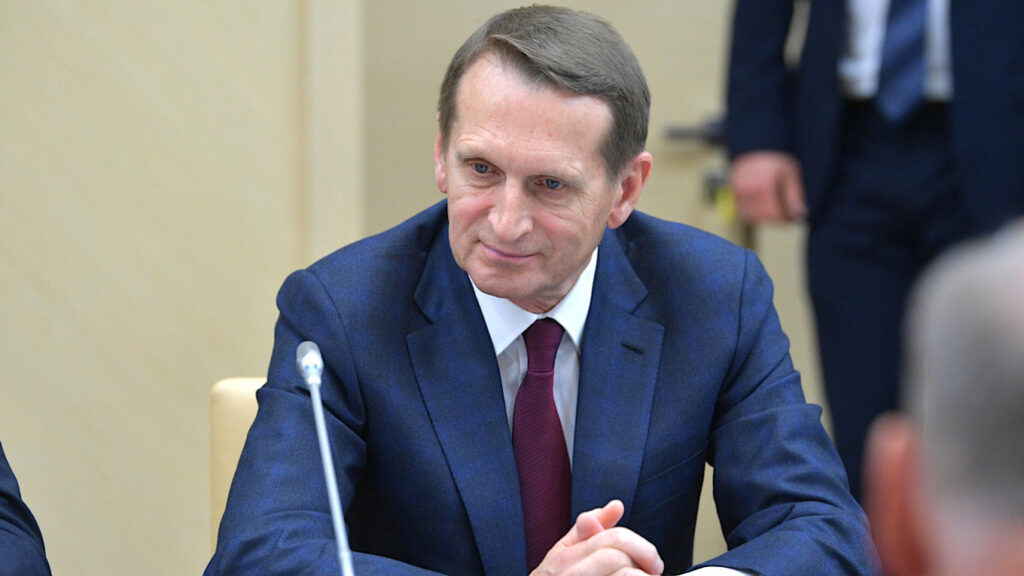
-
Moldova elections: Russia’s spy agency pushes conspiracy of planned NATO “occupation”
Russia’s Foreign Intelligence Service (SVR) has accused the European Union of conspiring to “occupy” Moldova with NATO troops following this weekend’s parliamentary elections. The sweeping allegation, made Tuesday in an official SVR statement, reflects Moscow’s ongoing disinformation campaign to destabilize Moldova as the country moves closer to the EU. The Russian agency claimed without providing any evidence that NATO was massing forces in Romania and the Ukrainian port
Moldova elections: Russia’s spy agency pushes conspiracy of planned NATO “occupation”

Russia’s Foreign Intelligence Service (SVR) has accused the European Union of conspiring to “occupy” Moldova with NATO troops following this weekend’s parliamentary elections.
The sweeping allegation, made Tuesday in an official SVR statement, reflects Moscow’s ongoing disinformation campaign to destabilize Moldova as the country moves closer to the EU.
The Russian agency claimed without providing any evidence that NATO was massing forces in Romania and the Ukrainian port city of Odesa, allegedly preparing either to suppress protests in Moldova after the vote or to interfere in Transnistria’s elections in November.
“Euro-bureaucrats in Brussels are determined to keep Moldova in line with their Russophobic policies. They intend to do this at any cost, including deploying troops and carrying out the de facto occupation of the country,” the SVR alleged.
Moldovan crackdown on Russian interference
The conspiracy narrative follows a major security operation in Moldova on Monday, when police carried out raids at 250 sites and arrested 74 people. Authorities say the suspects were part of Russian-backed networks paying locals to buy votes and training young Moldovans to instigate election violence.
President of Moldova Maia Sandu has repeatedly warned that Moscow seeks to derail Moldova’s democratic process.
“Russia aims to destabilize Moldova and pull us away from Europe,” Sandu said earlier this year.
Additionally, Bloomberg reported Monday that leaked documents detailed Russian plans to orchestrate protests, run disinformation campaigns, and mobilize Moldovan voters abroad as part of a broader interference strategy.
-
NYT > World News

-
Elon Musk’s Father, Errol Musk, Accused of Child Sexual Abuse
Errol Musk has been accused of sexually abusing five of his children and stepchildren since 1993, a Times investigation found. Family members have appealed to Elon Musk for help.
Elon Musk’s Father, Errol Musk, Accused of Child Sexual Abuse

© Gianluigi Guercia/Agence France-Presse — Getty Images
-
InfoBref ACTUALITES | L’essentiel de l’actualité politique et générale
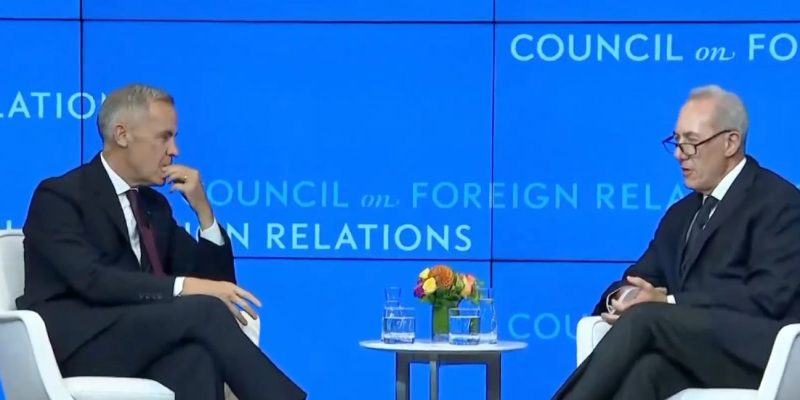
-
Le gouvernement fédéral veut approuver régulièrement de nouveaux grands projets
C’est ce qu’a indiqué Mark Carney hier à New York devant le Council on Foreign Relations, un groupe de réflexion indépendant et non partisan. Le premier ministre fédéral a précisé que son gouvernement compte échelonner les approbations de nouveaux projets d’intérêt national tous les quatre mois environ au cours des deux prochaines années. Pour rappel, la liste des 5 premiers projets qui seront examinés par le Bureau des grands projets a été dévoilée il y a deux semaines par le gouver
Le gouvernement fédéral veut approuver régulièrement de nouveaux grands projets

C’est ce qu’a indiqué Mark Carney hier à New York devant le Council on Foreign Relations, un groupe de réflexion indépendant et non partisan.
Le premier ministre fédéral a précisé que son gouvernement compte échelonner les approbations de nouveaux projets d’intérêt national tous les quatre mois environ au cours des deux prochaines années.
Pour rappel, la liste des 5 premiers projets qui seront examinés par le Bureau des grands projets a été dévoilée il y a deux semaines par le gouvernement Carney.
- L’agrandissement à Contrecœur du Port de Montréal en fait partie.
[L'article Le gouvernement fédéral veut approuver régulièrement de nouveaux grands projets a d'abord été publié dans InfoBref.]
-
NYT > World News

-
Forget ‘Love Island.’ Tennessee Has an Isle of Goats.
Eco-grazing goats help clear overgrowth worldwide. But rare is the herd that has to get to work by boat.
Forget ‘Love Island.’ Tennessee Has an Isle of Goats.

© Will Crooks for The New York Times
-
NYT > U.S. News

-
Halligan, Trump’s Chosen Prosecutor, Takes Over Comey and James Cases
The president is pushing up against the statute of limitations in his pursuit of charges against a former F.B.I. director, and also wants the attorney general of New York and a California senator prosecuted.
Halligan, Trump’s Chosen Prosecutor, Takes Over Comey and James Cases

© Evan Vucci/Associated Press
-
Le Devoir
-
Montréal inaugure des logements temporaires dans des roulottes de chantier
Très attendues, elles accueilleront jusqu’à 30 personnes sur le site de l’ancien hippodrome de Montréal.
Montréal inaugure des logements temporaires dans des roulottes de chantier
-
NYT > U.S. News

-
Retired Lobbyist in Federal Custody in ABC Affiliate Shooting in Sacramento, California
Prosecutors say that the suspect, a 64-year-old Sacramento man, had a note critical of Trump administration officials and a separate calendar reminder to “Do the Next Scary Thing.”
Retired Lobbyist in Federal Custody in ABC Affiliate Shooting in Sacramento, California

© Fred Greaves/Reuters
-
Le Devoir
-
La métropole est une «ville chaotique», selon Ensemble Montréal
L’opposition officielle à l’Hôtel de Ville dresse un sombre bilan des huit années au pouvoir de Valérie Plante.
La métropole est une «ville chaotique», selon Ensemble Montréal
-
NYT > U.S. News

-
Harris-Biden Rift Outlined in ’107 Days’ Reflects Long Pattern of History
Many presidents and vice presidents fall out by the end of their tenures, a fraught dynamic that goes back to the early days of the republic.
Harris-Biden Rift Outlined in ’107 Days’ Reflects Long Pattern of History

© Erin Schaff/The New York Times
-
Le Devoir
-
Valérie Plante part avec le sentiment du devoir accompli
La mairesse sortante affirme avoir donné l’heure juste aux Montréalais durant ses huit années à la mairie.
Valérie Plante part avec le sentiment du devoir accompli
-
NYT > World News

-
Nepal to Investigate Killings and Arson in Student Protests
It is a first effort by the country’s new government to understand the sequence of violent events that led to the abrupt downfall of the old one.
Nepal to Investigate Killings and Arson in Student Protests

© Atul Loke for The New York Times
-
NYT > World News

-
Britain, Australia, Canada and Portugal Recognize a Palestinian State
The moves came just before the annual U.N. General Assembly, increasing pressure on Israel and putting key allies at odds with the Trump administration.
Britain, Australia, Canada and Portugal Recognize a Palestinian State

© Pool photo by Alberto Pezzali
-
NYT > World News

-
Nepal Uprising Is Latest Challenge to India’s Backyard Diplomacy
The overthrow of Nepal’s government is the latest in a series of uprisings among India’s neighbors, creating a political churn that complicates its ties.
Nepal Uprising Is Latest Challenge to India’s Backyard Diplomacy

© Manish Swarup/Associated Press
-
Le Devoir
-
L’électrochoc qui fait démarrer la course à la mairie
Les tensions au sein de Projet Montréal donnent de l’élan au parti Transition Montréal.
L’électrochoc qui fait démarrer la course à la mairie
-
NYT > U.S. News

-
U.S. Attorney Investigating Letitia James Resigns After Trump Seeks to Oust Him
Erik S. Siebert had hit roadblocks investigating New York’s attorney general, Letitia James, and the former F.B.I. director James B. Comey.
U.S. Attorney Investigating Letitia James Resigns After Trump Seeks to Oust Him

© Rod Lamkey/Associated Press
-
Euromaidan Press
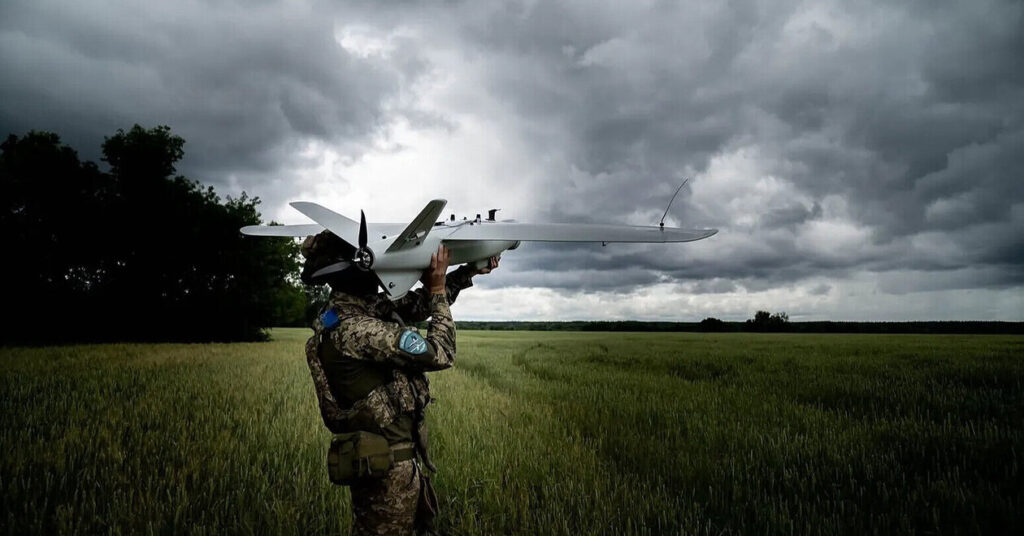
-
Ukraine could make the EU’s drone wall actually work—if politics allows
Europe faces a problem it’s never solved: how to stop thousands of cheap drones without bankrupting itself firing million-dollar missiles at styrofoam. Ukraine already knows the answer. The European Union’s “drone wall” defense initiative, reinvigorated just hours after Russian drones violated Polish and Romanian airspace on 10 September, could elevate Ukraine from aid recipient to essential defense partner— if said allies can overcome the technical and organizatio
Ukraine could make the EU’s drone wall actually work—if politics allows

Europe faces a problem it’s never solved: how to stop thousands of cheap drones without bankrupting itself firing million-dollar missiles at styrofoam.
Ukraine already knows the answer.
The European Union’s “drone wall” defense initiative, reinvigorated just hours after Russian drones violated Polish and Romanian airspace on 10 September, could elevate Ukraine from aid recipient to essential defense partner— if said allies can overcome the technical and organizational challenges of such an ambitious project.
The scale of the ambition involved is hard to understate. “It requires a whole paradigm shift,” Kirill Mikhailov, a military researcher with the Conflict Intelligence Team, told Euromaidan Press. Brigham McCown, a senior fellow at the Hudson Institute, called it a “monumental undertaking.”
If successful, the initiative can further accelerate Ukraine’s transformation from a beleaguered country asking for aid into an important part of European defensive strategy. Ukraine can help develop the technology, industrial practices, and organizational doctrines required for a new way of air war.
The need to integrate weapon systems and practices could also bind Ukraine even closer to its allies and help develop additional trust, potentially helping its arms-producing companies develop.
Why Ukraine holds the keys to Europe’s defense future
For Europe, it’s a way to evolve from reliance on big, expensive weapons, a doctrine that’s aging in the face of massed cheap unmanned aerial vehicles now swarming the skies.
“It should be pretty obvious that you don’t shoot down styrofoam drones with $2 million missiles,” Mikhailov said. “Thing is, that is all the Europeans currently have.”
Andrius Kubilius, the European Commissioner for Defense and Space, acknowledged a similar point at Ukraine’s Defense Tech Valley expo in Lviv on 17 September.
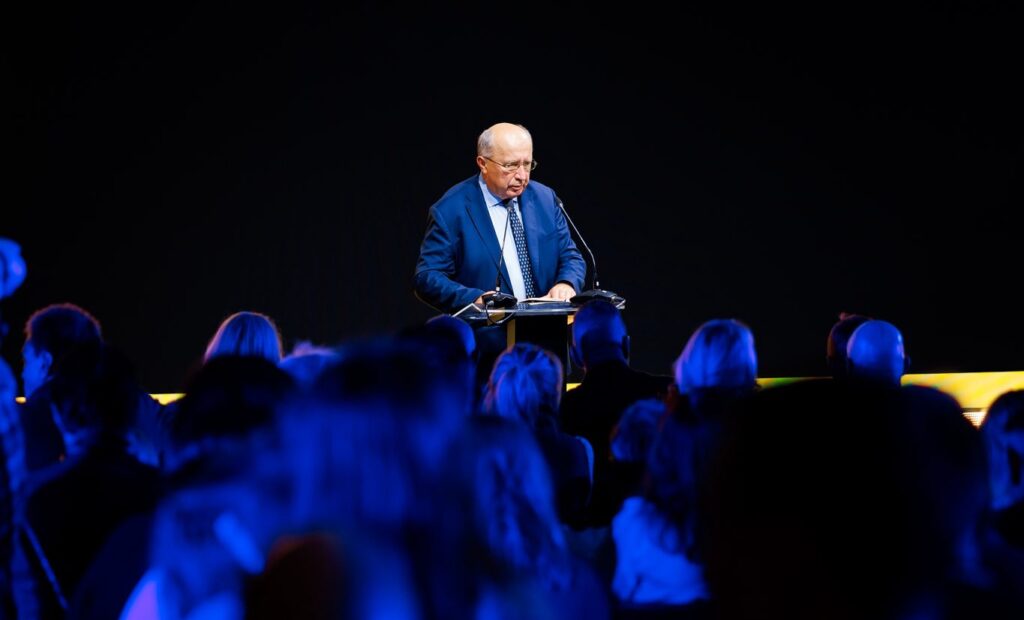
“We understood a simple truth: we do not have those capabilities that Ukraine has on how to fight against drone invasion,” Kubilius said. “We have F-16s, we have F-35s, we have all other weapons, but we do not have those capabilities.”
It’s unclear to what degree the EU intends to protect Ukraine with this initiative. Kubilius said this curtain must extend “across the entire EU Eastern flank.” This language suggests the possibility that Ukraine will be left to protect its own airspace alone as the EU turtles up.
However, when questioned by Euromaidan Press on whether one day the drone wall could include Ukraine, Kubelius said that the EU needs to build the drone wall “together with Ukraine and including Ukraine.”
Furthermore, Kubilius told Euromaidan Press that “each country on the frontline needs to have its own companies to produce,” making unclear the role of Ukrainian developers in the EU’s strategic air defense planning.
Depending on how strongly the EU countries favor local companies, this could make the drone wall more costly and difficult to build.
Kubilius told Euromaidan Press that it was too early to estimate the cost or build time of the initiative, but said that some public estimates by analysts suggest it could be done within a year.
Several defense experts who spoke with Euromaidan Press believe that multiple years are a likelier estimate.

First steps
NATO has been looking into a drone defense initiative throughout the full-scale invasion, military insiders told Euromaidan Press.
The term “drone wall” has cropped up in the news for months. French company Altares, speaking at the Defense Tech Valley, said it’s been working on it for six months, together with the Alliance.
But the rhetoric around a drone wall went into overdrive after the incursion of Russian drones into Polish and Romanian airspace on 10 September. Hours following the attack, in her 2025 State of the Union address, European Commission President Ursula von der Leyen revealed plans for a new “Eastern Flank Watch.”
This would include the “drone wall,” which she said would stretch down from the Baltic Sea to the Black Sea.
European leaders have said that Ukraine should play a role in the project. Kubilius pledged an intention to “include Ukraine into all our programs which we are developing in order to develop our defense capabilities in Europe,” needed to deter “Russian-style attacks.”
Von der Leyen said the EU would set up a “drone alliance” with Ukraine, funded by 6 billion euros. This will fall under the aegis of the G7-led Extraordinary Revenue Acceleration initiative, which is supposed to provide about 45 billion euros in financial support to Ukraine, with the EU contributing 18.1 billion euros.
Von der Leyen said that a roadmap for “getting new common defence projects off the ground” will be presented at the next European Council on October 23-24, with an eye towards setting clear goals for 2030.
Meanwhile, Ukraine and Poland agreed to establish a joint operational group on unmanned aerial systems, with representatives from both countries’ armed forces.

What’s in it for Ukraine: from aid recipient to tech powerhouse
There are multiple potential upsides for Kyiv becoming Europe’s defense tech guru. For one, it could help Ukrainian companies grow and expand.
“Ukraine has the silicon valley of this kind of technology, type of know-how and can become the world leader in drone and anti-drone tech, detection, counter, and this has very broad application beyond the current conflict,” McCown said.
Euromaidan Press spoke to several Ukrainian drone producers, who said that despite the government’s stated intention to procure all weapons produced from accredited and trusted contractors, the state is not able to afford their entire production capabilities.
Some Ukrainian companies are longingly eyeing the export market, but Ukraine’s hard restrictions on the import of military tech doesn’t allow it. The drone wall initiative may change things in that regard.
“The government hasn’t been warm to the idea of lifting the arms export ban,” Mikhailov said. “Now that Zelenskyy can paint himself the savior of Europe and make Ukraine indispensable for European security, I have few doubts he would greenlight it if asked.”
DeVore said that Ukraine’s innovation with drones, machine learning, AI and battle management is absolutely deeply respected. Allies are “very hungry to learn these lessons and one can think of this as a form of soft power or influence that Ukraine has.”
However, when asked if this might translate into more negotiating leverage for Kyiv, DeVore doesn’t believe so. “I think those allies that most appreciate and are most eager to learn these lessons are those that already have really close relations with Ukraine and are doing as much as feasible to help Ukraine,” he said.
Countries that are less worried about Russian attacks, such as Spain, Italy, and Hungary may not be swayed enough to change the overall status quo.

Nevertheless, most analysts agree that any parts of the “drone wall” on the European allies’ side would need to be fully integrated with Ukraine’s systems, as closely as they are with one another.
“This is a good thing for Ukraine, because that would build trust, interdependence, interoperability,” Mikhailov said. “It can be like the backbone of Ukraine’s further participation in NATO.”
The head of a Ukrainian company that builds interceptor drones, who did not wish to be identified for security reasons, said he hopes a closer working relationship between Ukraine and its allies, as part of the drone wall initiative, could help isolate Russia.
The massive technical challenges ahead
The obstacles the EU must overcome to build the drone wall are as almost as diverse as the hardware involved.
The most obvious challenge is logistical — drones require management of their power supplies, weather resilience and durability. Many thousands of drones must be built, deployed and serviced on a regular basis, with each requiring batteries, charging stations and redundancy plans for failure.
Data architect Daniel Connery said that the truly defining obstacle would be the creation of a software layer that can manage inputs from so many different systems and turn them into one coherent defense network, which is secure from outside tampering.
“Without a unifying software layer, you don’t have a ‘wall’ — you have scattered bricks,” he wrote to Euromaidan Press.
Ukrainian networked battlespace systems like Virazh and Delta may show Europeans the way forward, experts pointed out.
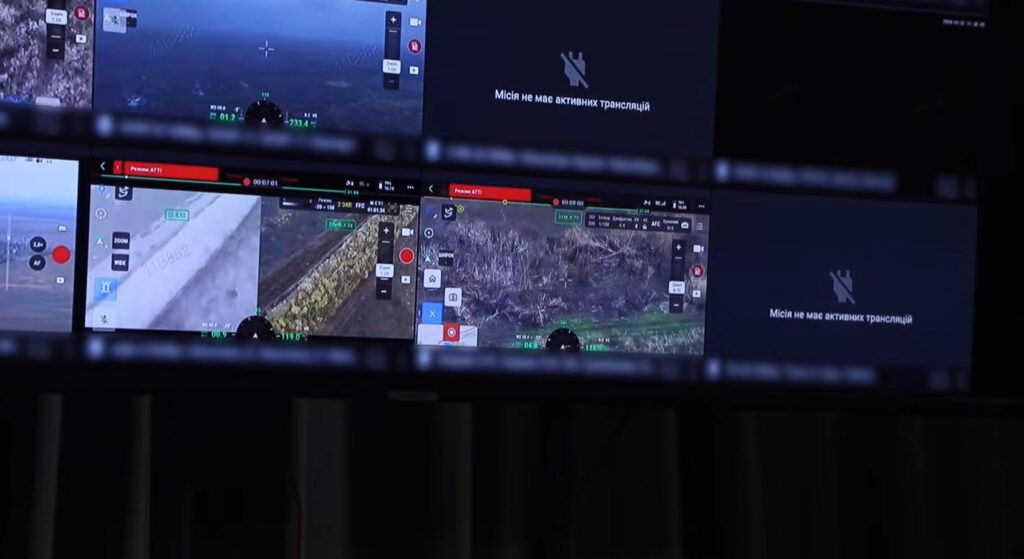
Manufacturing priorities are also bound to come up. After decades of consolidation, Europe has a small number of large defense contractors. These types of companies aren’t the most nimble when it comes to pivoting from producing few expensive weapons to many cheap ones.
Most analysts agreed that smaller companies will rush to fill that space, whether it’s local European firms that manufacture civilian equipment, or Ukrainian firms opening subsidiaries.
An entire cottage industry of such developers might come into Europe’s defense business space, poised to disrupt the market.
Speaking at the Defense Tech Valley, some Western firms complained about bureaucracy and confusing official procedures when it comes to doing business in each others’ territory. Legal, administrative and security clearance questions likely need to be resolved before cooperation can be scaled up to greater heights, experts said.
Ukraine might also need to accelerate its judicial reforms, as its legal environment is an Achilles’ heel when it comes to foreigners doing business with the country.
DeVore said that one problem with European defense programs is the dilemma between spending in Europe and spending efficiently. Systems produced in European nations are more popular with policymakers, but they aren’t the most cost-effective solution.
DeVore believes the drone wall is “fully feasible, it just requires some combination of political will and money.”
“Those two are inversely correlated,” he added. “The more political will the West has in putting this together, the cheaper it is.”
Alya Shandra, the editor-in-chief at Euromaidan Press, contributed reporting.
-
NYT > World News

-
How Kenyan Villagers Saved Their Sacred Caves From a Mining Company
An Emirati-backed cement project threatened ancestral prayer caves. The community fought back.
How Kenyan Villagers Saved Their Sacred Caves From a Mining Company

© Brian Otieno for The New York Times
-
Le Devoir
-
Une soirée avec ceux qui posent les pancartes électorales à Montréal
«Le Devoir» est allé à la rencontre de bénévoles des deux principaux partis qui participent à ce rituel.
Une soirée avec ceux qui posent les pancartes électorales à Montréal
-
Euromaidan Press
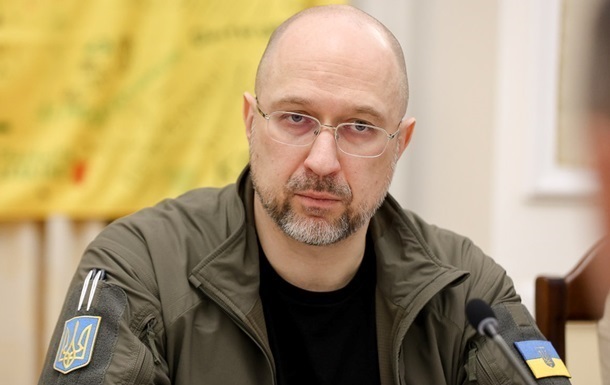
-
Ukraine to outmatch Russia’s drone attacks with 1,000 interceptors a day, Ukrainian PM assures
Ukraine is preparing to ramp up its aerial defense with a fleet of 1,000 drone interceptors deployed daily, Prime Minister Denys Shmyhal announced on 18 September during a press conference in Kyiv with Polish Defense Minister Władysław Kosiniak-Kamysz. This comes as Russia continues to carry out daily drone attacks targeting civilian infrastructure in rear Ukrainian cities. In these strikes, Russian forces typically launch between 100 and several hundred long-range explos
Ukraine to outmatch Russia’s drone attacks with 1,000 interceptors a day, Ukrainian PM assures

Ukraine is preparing to ramp up its aerial defense with a fleet of 1,000 drone interceptors deployed daily, Prime Minister Denys Shmyhal announced on 18 September during a press conference in Kyiv with Polish Defense Minister Władysław Kosiniak-Kamysz.
Kyiv aims to surpass Russia’s nightly drone attacks
Suspilne reported that Shmyhal said Ukraine’s goal is to exceed the current scale of Russian drone usage, which he sometimes reaches around 800 drones per night. To do so, he confirmed Ukraine is working toward the capability to operate no fewer than 1,000 drone interceptors per day.
“This level will be reached. I cannot say what the current level is, but this level will be implemented in the near future,” Shmyhal claimed at the briefing.
The Prime Minister emphasized that this goal is not distant and that work is progressing according to schedule.
The challenge isn’t drones — it’s deployment systems
Shmyhal clarified that drone production is not the limiting factor in reaching the 1,000-interceptor mark. Instead, the main challenge lies in the availability and implementation of ground-based control systems, radar units, and components that utilize artificial intelligence for targeting and guidance.
“This is a large complex, and its implementation takes some time. But we are moving confidently and according to schedule toward this goal,” he added.
Read also
-
NYT > World News

-
How Kenyan Villagers Saved Their Sacred Caves From a Mining Company
An Emirati-backed cement project threatened ancestral prayer caves. The community fought back.
How Kenyan Villagers Saved Their Sacred Caves From a Mining Company

© Brian Otieno for The New York Times
-
InfoBref ACTUALITES | L’essentiel de l’actualité politique et générale
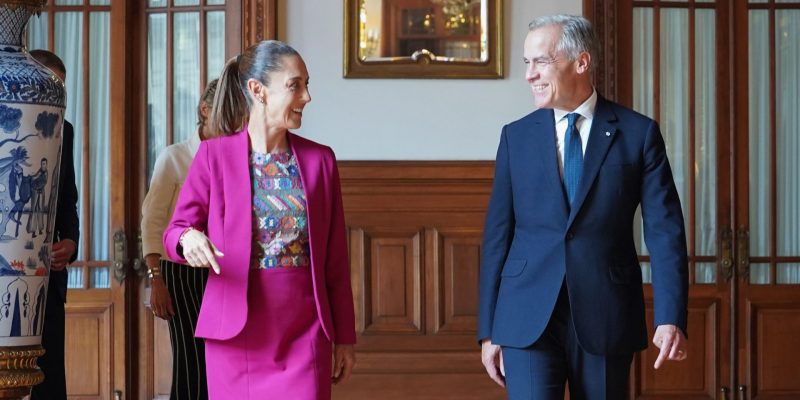
-
Le Canada va conclure un nouveau partenariat avec le Mexique
Mark Carney est arrivé hier à Mexico pour rencontrer la présidente mexicaine Claudia Sheinbaum, et «resserrer les liens» entre le Canada et le Mexique. Les deux pays s’engagent à: prioriser la mise en place de ports, de chemins de fer, et de corridors énergétiques directs entre les deux pays; coopérer pour lutter contre le crime organisé, le trafic de drogue et la cybercriminalité; favoriser le commerce et l’investissement dans plusieurs domaines – énergie, infrastructure, miné
Le Canada va conclure un nouveau partenariat avec le Mexique

Mark Carney est arrivé hier à Mexico pour rencontrer la présidente mexicaine Claudia Sheinbaum, et «resserrer les liens» entre le Canada et le Mexique.
Les deux pays s’engagent à:
- prioriser la mise en place de ports, de chemins de fer, et de corridors énergétiques directs entre les deux pays;
- coopérer pour lutter contre le crime organisé, le trafic de drogue et la cybercriminalité;
- favoriser le commerce et l’investissement dans plusieurs domaines – énergie, infrastructure, minéraux critiques et agriculture;
- renforcer la coopération en matière de climat et de protection de la faune et des réseaux d’eau douce.
[L'article Le Canada va conclure un nouveau partenariat avec le Mexique a d'abord été publié dans InfoBref.]
-
Le Devoir
-
La qualité de vie, force ou faiblesse de Montréal à l’étranger?
Luc Rabouin et Soraya Martinez Ferrada présentent deux visions opposées de la réputation de la métropole.
La qualité de vie, force ou faiblesse de Montréal à l’étranger?
-
Le Devoir
-
Quel est le véritable héritage vert de Valérie Plante pour Montréal?
Entre pistes cyclables, arbres plantés et parcs-éponges, on dresse le bilan de ses deux mandats.
Quel est le véritable héritage vert de Valérie Plante pour Montréal?
-
Le Devoir
-
Valérie Plante «ravie» de l’ouverture du nouveau bureau de l’ONU à Montréal
Sa mission inclut la promotion de «villes et d’établissements humains inclusifs, sûrs, résilients et durables».
Valérie Plante «ravie» de l’ouverture du nouveau bureau de l’ONU à Montréal
-
Le Devoir
-
Les étudiants pourront voter aux élections municipales sur les campus montréalais
Conscient de la faible participation, Élections Montréal a mis en place des «moyens pour favoriser le vote».
Les étudiants pourront voter aux élections municipales sur les campus montréalais
-
Euromaidan Press
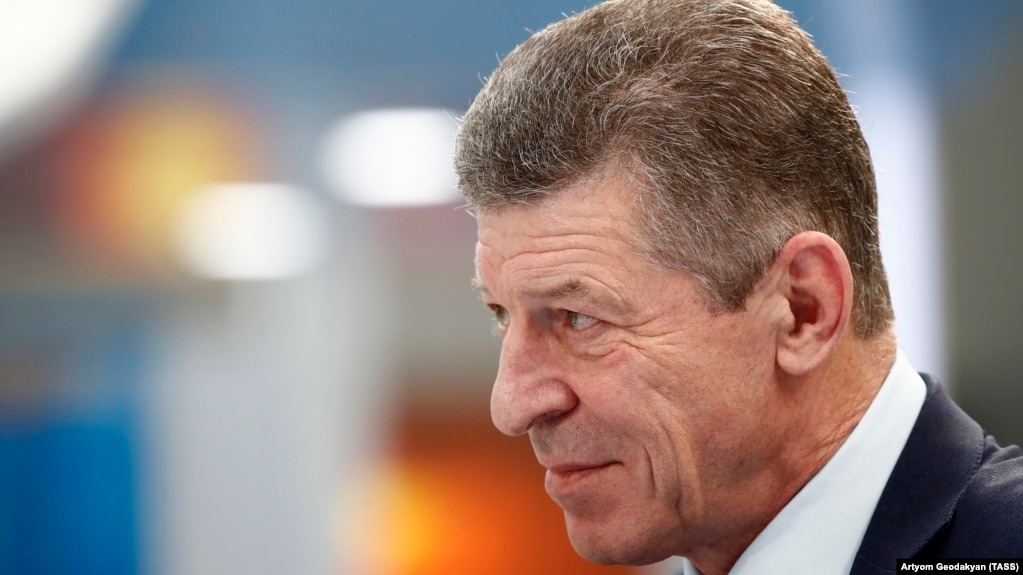
-
ISW: Putin removes top Kremlin aide Kozak who allegedly warned him to end the war in Ukraine
Senior Kremlin officials, likely with Russian President Vladimir Putin’s approval, pushed Deputy Chief of Staff Dmitry Kozak out of his position after repeated clashes over the war in Ukraine, the Institute for the Study of War (ISW) reported on 17 September. Russian state media outlet RBK stated that two sources familiar with the situation confirmed Kozak “resigned” from his post over the weekend of 13 to 14 September. RBK noted he is now considering business offers foll
ISW: Putin removes top Kremlin aide Kozak who allegedly warned him to end the war in Ukraine

Senior Kremlin officials, likely with Russian President Vladimir Putin’s approval, pushed Deputy Chief of Staff Dmitry Kozak out of his position after repeated clashes over the war in Ukraine, the Institute for the Study of War (ISW) reported on 17 September. Russian state media outlet RBK stated that two sources familiar with the situation confirmed Kozak “resigned” from his post over the weekend of 13 to 14 September. RBK noted he is now considering business offers following his exit.
The allegedly dissenting voice in 2022
Russian political scientist Arkady Dubnov reported on 17 September that sources in Moscow said Kozak “voluntarily” left his position. Dubnov highlighted that Kozak was the only official at the 21 February 2022 Security Council meeting who opposed launching the full-scale invasion of Ukraine. Russian journalist Alexey Venediktov also confirmed this account.
Kozak reportedly attempted to negotiate with Ukraine at the start of the war, proposing that Kyiv renounce NATO membership. Putin allegedly rejected the talks because he also wanted to annex Ukrainian territory, according to ISW.
Collapse of influence inside Kremlin
The New York Times reported on 10 August that both Western and Russian sources said Kozak’s influence declined sharply in recent months, aaccording to ISW. He reportedly urged Putin to stop fighting in Ukraine, begin peace talks, and reduce the power of Russia’s security services. Those disagreements placed him at odds with Putin and his allies, including Kremlin Deputy Head Sergei Kiriyenko.
Putin signed a decree on 29 August abolishing two Kremlin departments Kozak supervised: the Department for Interregional and Cultural Relations with Foreign Countries and the Department for Cross-Border Cooperation. Analysts assess this was likely in preparation for Kozak’s removal. Reports on 17 September that he is considering business positions refuted earlier claims that he was a candidate for Presidential Plenipotentiary Representative in the Northwestern Federal DIstrict, showing the Kremlin opted to remove him entirely from state structures.
Reports indicate Kiriyenko has also recently assumed control of the Kremlin’s Moldova portfolio. This handover consolidates Kiriyenko’s power and responsibilities within the Russian Presidential Administration.
“Putin’s likely decision to push an established senior Kremlin official from his inner circle after expressing a desire to end the war in Ukraine further indicates that Putin and his advisors are coalescing around their commitment to continue the war in Ukraine and around Putin’s maximalist war demands,” ISW assessed.
-
Euromaidan Press

-
Ukraine and Poland to create a joint drone unit to counter “common enemy”- Shmyhal
Ukraine and Poland have agreed to establish a joint operational group on unmanned aerial systems, with representatives from both countries’ armed forces, Interfax-Ukraine reported on 18 September. Ukrainian Defense Minister Denys Shmyhal announced the agreement during a press conference in Kyiv with his Polish counterpart Władysław Kosiniak-Kamysz, who arrived on an unannounced visit. “Today we agreed on a number of important steps. First – the creation of a joint operat
Ukraine and Poland to create a joint drone unit to counter “common enemy”- Shmyhal

Ukraine and Poland have agreed to establish a joint operational group on unmanned aerial systems, with representatives from both countries’ armed forces, Interfax-Ukraine reported on 18 September.
Ukrainian Defense Minister Denys Shmyhal announced the agreement during a press conference in Kyiv with his Polish counterpart Władysław Kosiniak-Kamysz, who arrived on an unannounced visit.
“Today we agreed on a number of important steps. First – the creation of a joint operational group on unmanned aerial systems, which will include representatives of Ukrainian and Polish armed forces,” Shmyhal said.
The group will serve as a platform for coordination and development of joint initiatives, according to the Ukrainian minister. “We will integrate the latest defense technologies and initiate new projects that should strengthen the protection of our people and our critical infrastructure,” he stated.
Joint training programs will form the central element of this operational group. “…Which, I am confident, will strengthen our ability to resist a common enemy,” Shmyhal added.
Polish Defense Minister Kosiniak-Kamysz announced the signing of an agreement on acquiring drone operation skills during his Kyiv visit. “Discussions will focus on developing joint industrial initiatives. I think Poles are looking forward to this after such large-scale efforts aimed at helping the population,” the Polish minister said.
Kosiniak-Kamysz emphasized that implementing lessons learned from the Ukrainian battlefield is crucial for transforming Poland’s Armed Forces and NATO as a whole. He noted “obvious openness and readiness for cooperation” from the Ukrainian side.
The Polish minister addressed bilateral tensions directly: “I realize the emotions that sometimes arise between us, between Poland and Ukraine, but they should not overshadow our strategic goal. The enemy is elsewhere. It should not be sought within ourselves, among ourselves.”
The agreement represents a step toward deeper defense cooperation between the two countries, with focus on drone technology and joint military training programs.
-
NYT > World News

-
Rifts Grow Between Netanyahu and His Security Chiefs
As Israel expands its war in Gaza, decision-making has become increasingly concentrated in the hands of one person: Prime Minister Benjamin Netanyahu.
Rifts Grow Between Netanyahu and His Security Chiefs

© Amir Cohen/Reuters
-
Le Devoir
-
La ville de Montréal est-elle plus verte qu’avant?
Valérie Plante avait promis en 2017 d’offrir un meilleur accès à la nature. A-t-elle tenu ses promesses?
La ville de Montréal est-elle plus verte qu’avant?
-
Le Devoir
-
Les bémols au bilan de Valérie Plante
L’administration de la mairesse a rencontré plusieurs écueils, notamment en habitation et en itinérance.
Les bémols au bilan de Valérie Plante
-
Le Devoir
-
L’ajout de pistes cyclables, bénéfique pour la mobilité de tous
L’expansion du réseau de pistes cyclables contribue à désengorger les rues de la métropole, selon des experts.
L’ajout de pistes cyclables, bénéfique pour la mobilité de tous
-
NYT > U.S. News

-
Trump Administration Announces New Civics Effort With MAGA-Aligned Groups
President Trump has long sought to imbue the nonpartisan idea of civics — the rights, responsibilities and duties of citizenship — with his politics.
Trump Administration Announces New Civics Effort With MAGA-Aligned Groups

© Kenny Holston/The New York Times
-
Le Devoir
-
La directrice de campagne de Projet Montréal passe dans le camp adverse
Julie Bélanger travaillera avec l’équipe de Craig Sauvé, chef du parti Transition Montréal.
La directrice de campagne de Projet Montréal passe dans le camp adverse
-
NYT > World News

-
Corals Won’t Survive a Warmer Planet, a New Study Finds
Most corals in the Atlantic Ocean will soon stop growing. Many are already dying, leaving shorelines and marine ecosystems vulnerable.
Corals Won’t Survive a Warmer Planet, a New Study Finds

© Jason Gulley for The New York Times
-
Le Devoir
-
Luc Rabouin lance sa campagne pour la mairie de Montréal en promettant des «solutions»
Le chef de Projet Montréal présentait son slogan et sa liste finale de 103 candidats mercredi.
Luc Rabouin lance sa campagne pour la mairie de Montréal en promettant des «solutions»
-
NYT > World News

-
As Trump Arrives, Europe’s Right Claims Charlie Kirk as One of Their Own
After decades of claiming persecution, once marginalized parties latch on to the American activist’s assassination as proof of their victimization.
As Trump Arrives, Europe’s Right Claims Charlie Kirk as One of Their Own

© Susana Vera/Reuters
-
NYT > World News

-
Young Protesters in Nepal Recover Looted Goods for Shopkeepers
After protests left behind a trail of destruction in Nepal, a group of small business owners are stepping in to salvage looted home appliances in an effort to restore order.
Young Protesters in Nepal Recover Looted Goods for Shopkeepers

© Shanta Nepali for The New York Times
-
NYT > World News

-
How Nepal’s Government Went Up in Smoke
Arson attacks during protests in Nepal destroyed buildings, court files and even records of international agreements and state investments.
How Nepal’s Government Went Up in Smoke

-
NYT > World News

-
German Man Suspected in Madeleine McCann Disappearance Is Released From Prison
Eighteen years after Madeleine McCann, a 3-year-old British girl, disappeared in Portugal, the man considered a suspect by Britain and Germany was released after serving a sentence in a separate case.
German Man Suspected in Madeleine McCann Disappearance Is Released From Prison

© Armando Franca/Associated Press
-
InfoBref ACTUALITES | L’essentiel de l’actualité politique et générale

-
Montréal et le gouvernement fédéral investissent 320 millions $ dans le futur quartier Namur-Hippodrome
Ce financement doit servir à amorcer un important projet immobilier. Il vise à construire jusqu’à 20 000 logements – dont la moitié seraient abordables – sur le site de l’ancien hippodrome de Montréal, dans Côte-des-Neiges–Notre-Dame-de-Grâce. Le financement doit permettre de construire les infrastructures essentielles – réseaux d’aqueduc et d’eau potable – pour desservir les 2000 premiers logements. La Ville de Montréal va investir un peu plus de 190 millions $. Le gouvern
Montréal et le gouvernement fédéral investissent 320 millions $ dans le futur quartier Namur-Hippodrome

Ce financement doit servir à amorcer un important projet immobilier.
Il vise à construire jusqu’à 20 000 logements – dont la moitié seraient abordables – sur le site de l’ancien hippodrome de Montréal, dans Côte-des-Neiges–Notre-Dame-de-Grâce.
- Le financement doit permettre de construire les infrastructures essentielles – réseaux d’aqueduc et d’eau potable – pour desservir les 2000 premiers logements.
La Ville de Montréal va investir un peu plus de 190 millions $.
Le gouvernement fédéral va injecter près de 130 millions $
La construction des infrastructures et des premiers logements devrait débuter au printemps prochain.
[L'article Montréal et le gouvernement fédéral investissent 320 millions $ dans le futur quartier Namur-Hippodrome a d'abord été publié dans InfoBref.]
-
NYT > U.S. News

-
Florida Says Ban on Openly Carrying Guns Is Invalid After Court Ruling
The state attorney general told law enforcement officers to stop enforcing the decades-old ban, after a court last week ruled it unconstitutional.
Florida Says Ban on Openly Carrying Guns Is Invalid After Court Ruling

© Shannon Stapleton/Reuters
-
Journal Le Soir

-
Transport scolaire : pas de reprise mardi
La remise en service des autobus électriques Lion est reportée jusqu’à nouvel ordre par le Centre de services scolaire (CSS) des Phares. Les inspections exigées par le fabricant sont toujours en cours et le CCS travaille avec ses transporteurs scolaires afin de rétablir le service dans les meilleurs délais. « Nous ne sommes actuellement pas en mesure de confirmer la reprise du service le mardi 16 septembre. Les parents dont les enfants utilisent les circuits suivants devront assurer le tr
Transport scolaire : pas de reprise mardi

La remise en service des autobus électriques Lion est reportée jusqu’à nouvel ordre par le Centre de services scolaire (CSS) des Phares.
Les inspections exigées par le fabricant sont toujours en cours et le CCS travaille avec ses transporteurs scolaires afin de rétablir le service dans les meilleurs délais.
« Nous ne sommes actuellement pas en mesure de confirmer la reprise du service le mardi 16 septembre. Les parents dont les enfants utilisent les circuits suivants devront assurer le transport de leur enfant : 205, 22, 14, 55, 57, 60, 109, 11, 117, 27, 116, 105, 023, 026, 115, 102, 101, 009, 008, 121. Dès que nous pourrons confirmer la reprise progressive des circuits, l’information sera diffusée sur notre site web, notre page Facebook et envoyée via le Portail parent », peut-on lire sur la page Facebook du Centre.
Il a annoncé tôt ce lundi 15 septembre, des interruptions pour certains services puisque les transporteurs devaient faire d’autres inspections sur les Autobus Lion après celles de vendredi dernier.
D’autres centres de services scolaires de la province ont aussi annoncé que le transport scolaire demeurerait suspendu pour le 15 septembre.
À la suite d’un accident à Montréal
Des annulations du transport scolaire ont eu lieu, vendredi dernier. Le gouvernement Legault a annoncé jeudi soir que les quelque 1200 autobus scolaires de Lion qui circulent sur les routes du Québec seront à l’arrêt le temps de procéder à des inspections.
Cette décision a été prise à la suite d’un incendie survenu mardi à Montréal, lors duquel un autobus électrique de Lion a pris feu. Quelques enfants et un chauffeur se trouvaient à l’intérieur, mais ils n’ont pas été blessés.

L’entreprise a indiqué dans un communiqué transmis vendredi soir qu’elle était confiante d’« un retour progressif et sécuritaire des autobus scolaires sur les routes du Québec dès lundi ».
La Société de l’assurance automobile du Québec (SAAQ) avait alors approuvé son plan visant à remettre en circulation les autobus scolaires électriques de marque LION-C.
Avec l’aide de La Presse Canadienne
-
NYT > World News
-
How an Emirati Royal Won the Battle for A.I. Chips
Sheikh Tahnoon bin Zayed Al Nahyan of the United Arab Emirates secured a tentative A.I. chip deal with the United States. His company also struck a $2 billion deal with President Trump’s crypto start-up. David Yaffe-Bellany, a technology reporter for The New York Times, walks us through both deals’ intersecting timelines.
How an Emirati Royal Won the Battle for A.I. Chips
-
NYT > World News

-
In Giant Deals, U.A.E. Got Chips, and Trump Team Got Crypto Riches
A lucrative transaction involving the Trump family’s cryptocurrency firm and an agreement giving the Emiratis access to A.I. chips were connected in ways that have not been previously reported.
In Giant Deals, U.A.E. Got Chips, and Trump Team Got Crypto Riches

© Mark Harris
-
NYT > World News

-
A Times Investigation Into Trump, UAE and 2 Giant Deals: 5 Takeaways
A $2 billion crypto deal and an agreement to sell valuable chips to the United Arab Emirates were intertwined in ways that have not been previously reported.
A Times Investigation Into Trump, UAE and 2 Giant Deals: 5 Takeaways

© Doug Mills/The New York Times
-
NYT > U.S. News

-
In Giant Deals, U.A.E. Got Chips, and Trump Team Got Crypto Riches
A lucrative transaction involving the Trump family’s cryptocurrency firm and an agreement giving the Emiratis access to A.I. chips were connected in ways that have not been previously reported.
In Giant Deals, U.A.E. Got Chips, and Trump Team Got Crypto Riches

© Mark Harris
-
NYT > U.S. News

-
A Times Investigation Into Trump, UAE and 2 Giant Deals: 5 Takeaways
A $2 billion crypto deal and an agreement to sell valuable chips to the United Arab Emirates were intertwined in ways that have not been previously reported.
A Times Investigation Into Trump, UAE and 2 Giant Deals: 5 Takeaways

© Doug Mills/The New York Times
-
NYT > World News

-
Suspect in Madeleine McCann Disappearance Refuses Interview With UK Police
Christian Brückner, the main suspect in the 2007 case, rejected an interview request ahead of his release this week from a German prison for a separate crime, the British police said.
Suspect in Madeleine McCann Disappearance Refuses Interview With UK Police

© Pool photo by Julian Stratenschulte
